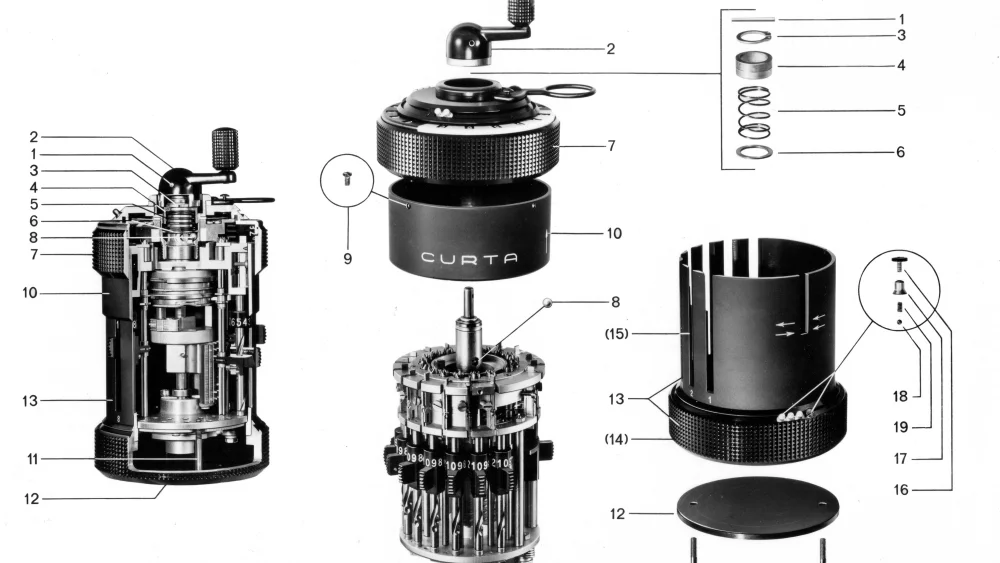< Back to overview

news
01. April 2019 | Technology
CURTA – A COLLECTOR’S GEM

The smallest mechanical calculator in the world was a sensation at the end of the 1940s – and so it remains today. It is regarded as the legacy of original inventor Curt Herzstark from Vienna, who spent his time at the Buchenwald concentration camp producing design drawings as what was referred to as an “intelligence slave”.
The mechanics of the Curta are said to be comparable with those of a watch movement. In the 1950s, the handy and stylish Curta had advanced to the role of trusty companion to architects, surveyors, engineers and craftsmen. It ran like clockwork: the 571 individual parts in the first model, the Curta 1, were orchestrated in such a way that the elegant device could be used to perform the four basic arithmetic functions and later, in the second version, even root extraction with the utmost precision. But the whole is greater than the sum of its individual parts. How did Curt Herzstark, son of a calculator manufacturer, succeed in creating a mobile pocket calculator after so many other expert contemporaries had failed?
CURTA – AN OLD INVENTION REDISCOVERED
Herzstark quickly discovered that the existing calculators could not be made much smaller. So instead, he used the dimensions and the precision mechanics of a watch movement, a pocket watch, as a guide and considered how he could enlarge the tiny mechanism. He approached the problem from a different angle. He acted as if he had already invented the pocket calculator and had had the special shape of the device firmly anchored in his mind beforehand. In doing so, he took customer requirements into consideration too – keeping his finger on the pulse of the market. His technical skills, his unconventional way of thinking and practical experience from his work at his father’s factory came together to enable him to house the complex mechanism in the round case with the crank handle.

Locations
YOUR JEWELLER FOR LUXURY WATCHES AND JEWELLERY IN LIECHTENSTEIN, SWITZERLAND AND AUSTRIA
-

WORLD OF WATCHES
Städtle 11, FL-9490 Vaduz
T +423 237 14 14
WhatsApp +41 79 814 3613
welcome@huber.li -

HUBER BREGENZ
Kirchstraße 1, AT-6900 Bregenz
T +43 5574 23 9 32
WhatsApp +43 664 5353 268
welcome@huber-juwelier.at -

HUBER BREGENZ
Rathausstrasse 7, AT-6900 Bregenz
T +43 5574 23 9 32
WhatsApp +43 664 158 61 35
welcome@huber-juwelier.at -

HUBER LECH
Dorf Nr. 115, 6764 Lech am Arlberg
T +43 5583 37 37
WhatsApp +43 664 236 1146
welcome@huber-juwelier.at


